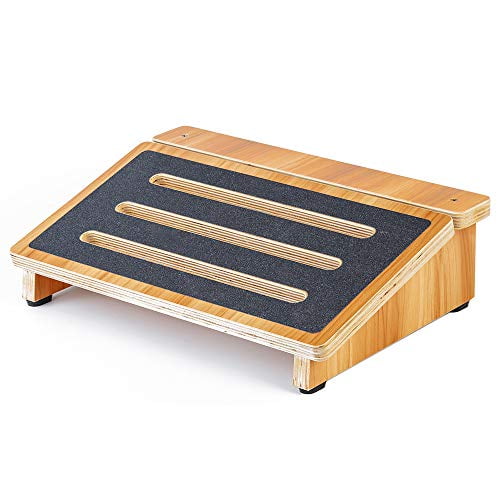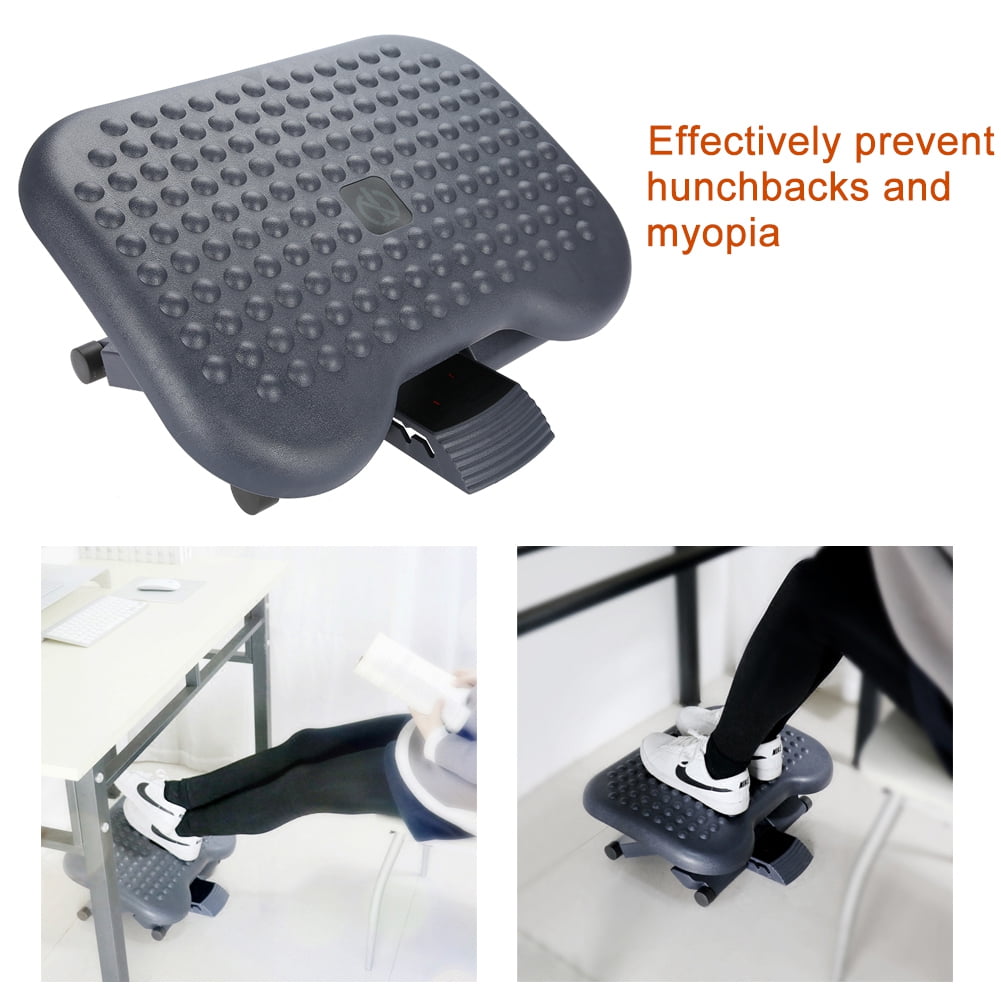


My oldest is super tall, so he has no issue at all with his feet reaching the ground at his desk, but my youngest isn’t that tall yet. With schools closed to in-person learning right now, my boys are also distance learning at home, which means they’re in front of the computers while they are also in school. I decided I wanted to build an office foot rest to make myself a little more comfortable while I’m working at my computer. I’m not exactly tall, so it’s always a little uncomfortable to sit for any period of time at my desk, as my feet don’t fully reach the floor. This foot rest is simple to build or you can dress it up with special wood.īeing a DIY blogger means I spend a lot of time in my workshop building things, but once those projects are finished, I end up spending a lot of time at my desk editing photos, videos, and typing up tutorials like this one.
Small foot rest under desk how to#
" ottoman", accessed 6 March 2013.Learn how to build an office foot rest to keep yourself comfortable while you work from home or your kids as they are practicing virtual learning.

^ One or more of the preceding sentences incorporates text from a publication now in the public domain: Chisholm, Hugh, ed.^ "Ottomans For Decoration and Storage".By the 20th century the word ottoman had come to encompass both forms.

The ottoman footstool, a closely allied piece of furniture, was an upholstered footstool on four legs, which could also be used as a fireside seat, the seat covered with carpet, embroidery or beadwork. The ottoman began to have hinged seats to make use of the empty space inside which can be used to store items. for an Ottomane of velours d'Utrecht." Over time, European ottomans took on a circular or octagonal shape through the 19th century, with seating divided in the center by arms or by a central, padded column that might hold a plant or statue. The first known recorded use in English occurs in one of Thomas Jefferson's memorandum books from 1789: "Pd. The earliest known instance of the use of the name is ottomane in French in 1729, and in the course of a generation it made its way into every boudoir, but it appears originally to have been much larger than at present. The ottoman was eventually brought to Europe from the Ottoman Empire in the late 18th century and named after its place of origin. It was first designed as sectional furniture that wrapped around three walls of a room, before evolving into smaller versions that fit into the corner of a room or circular padded seats surrounding a column or pole in a public room. The ottoman traces its roots to furnishing practices in the Ottoman Empire, where it was the central piece of residential seating, generally designed as a low wooden platform intended to be piled with cushions. Other names for this piece of furniture include footstool, hassock, pouf (sometimes spelled pouffe), in Shropshire, England the old dialect word tumpty may be used, or in Newfoundland a humpty. Ottoman footstools are often sold as coordinating furniture with armchairs, sofas or gliders. The smaller version is usually placed near to an armchair or sofa as part of living room decor or may be used as a fireside seat. The seat may have hinges and form a lid for the inside hollow, which can be used for storage of linen, magazines or other items, making it a form of storage furniture. They may be an upholstered low couch or a smaller cushioned seat used as a table, stool or footstool. Generally ottomans have neither backs nor arms.


 0 kommentar(er)
0 kommentar(er)
